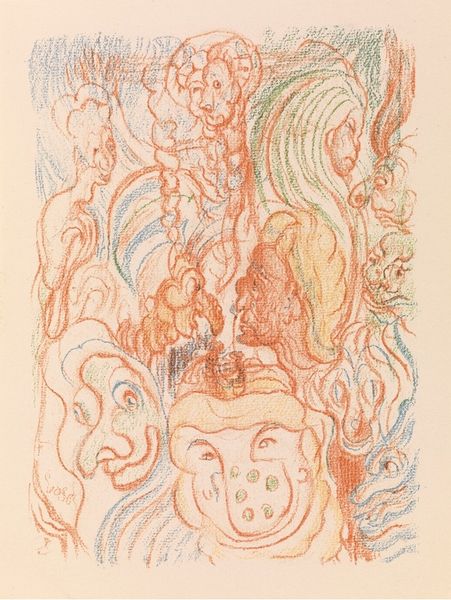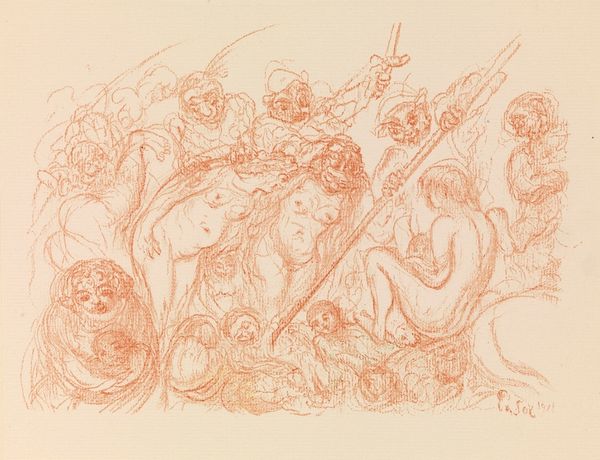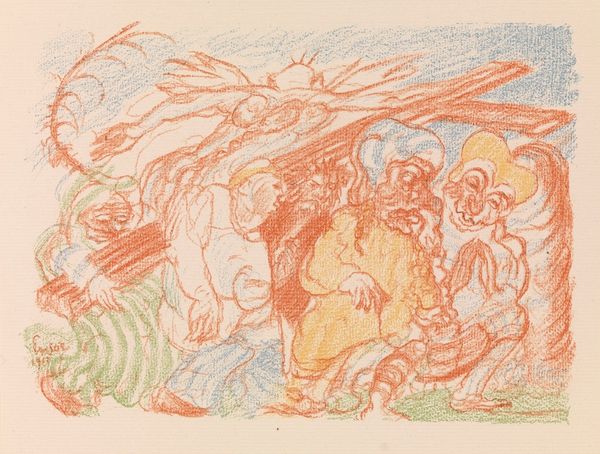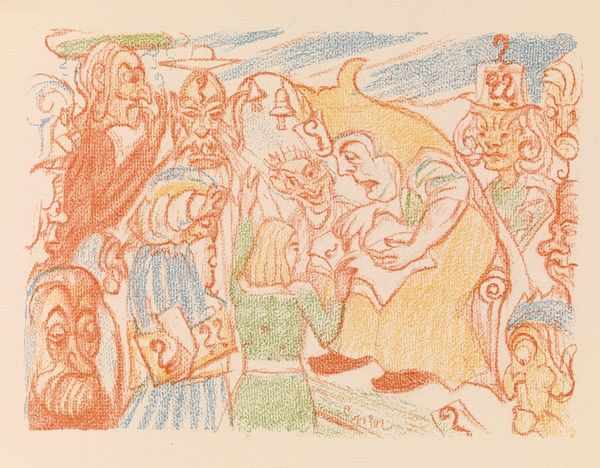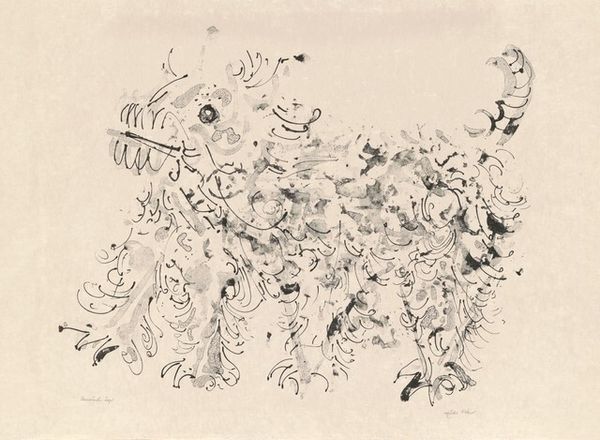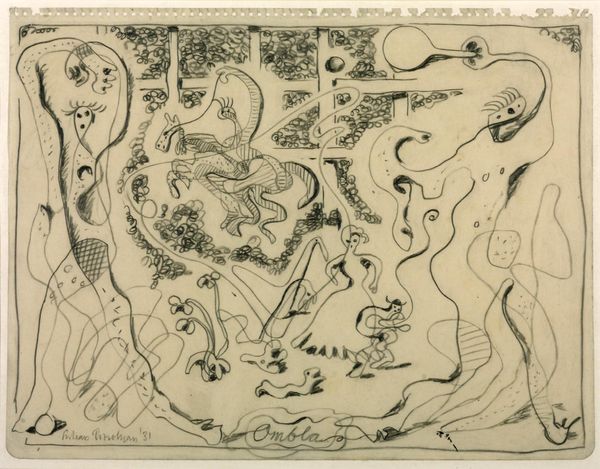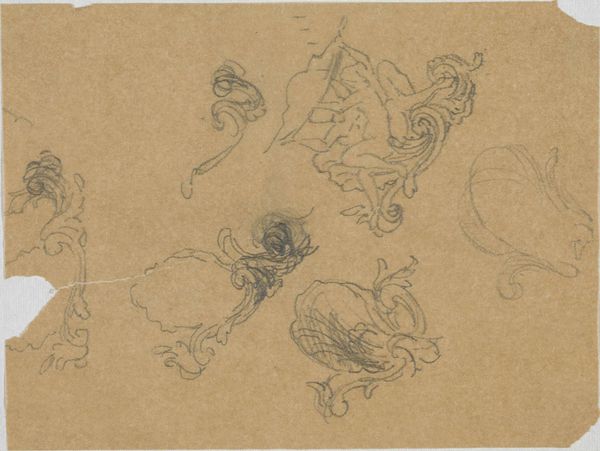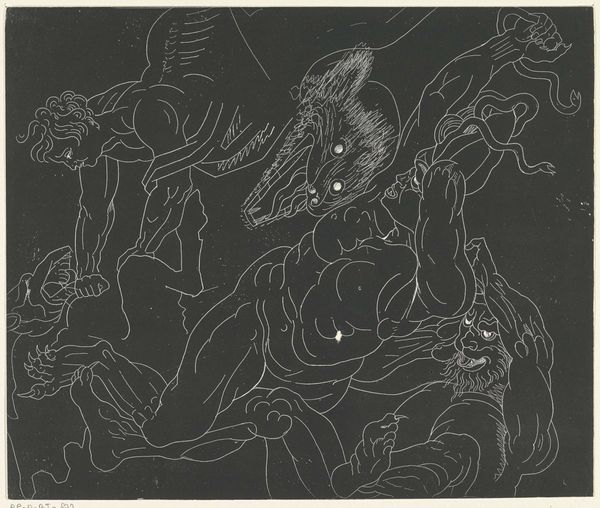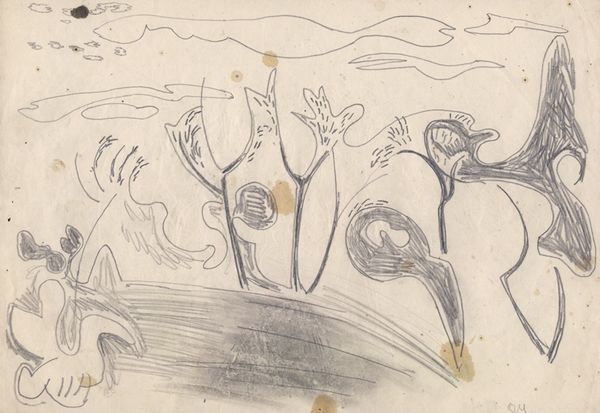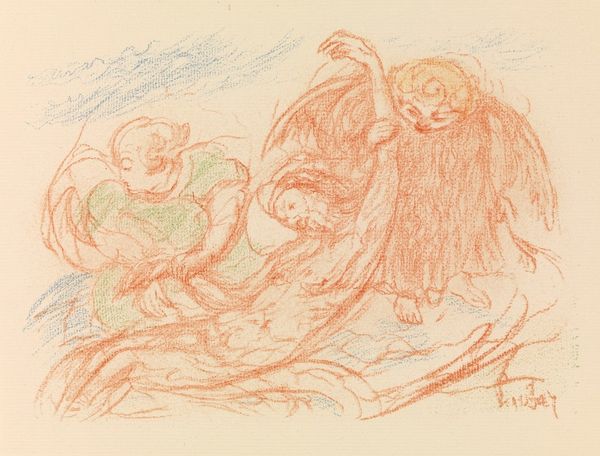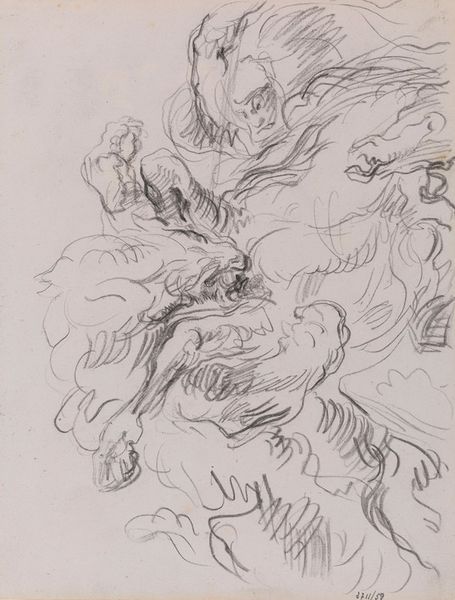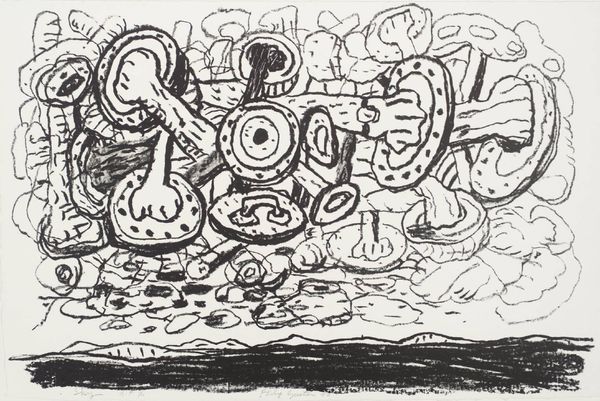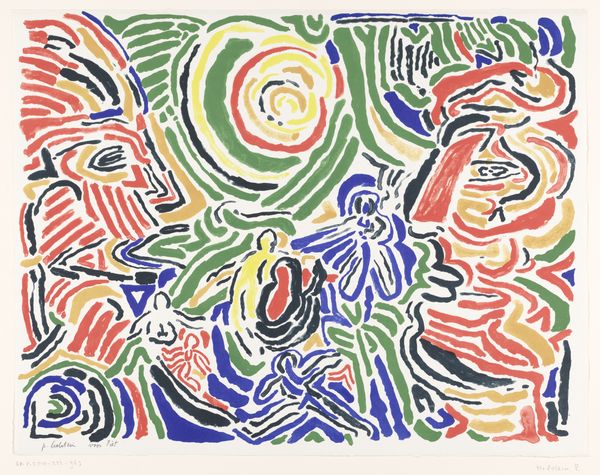
#
pen sketch
#
henna art
#
junji ito style
#
ink line art
#
linocut print
#
ink drawing experimentation
#
pen work
#
tattoo art
#
coloring book page
#
doodle art
Copyright: Public Domain: Artvee
Editor: James Ensor's "The Holy Family," created in 1921, strikes me as quite unconventional. It's a chaotic mix of figures rendered with what looks like colored pencil or crayon. There's a disquieting, almost grotesque quality to the expressions. How do you interpret this work? Curator: The grotesqueries and exaggerations are classic Ensor, often serving as a powerful critique of societal norms and hidden truths. Ensor frequently employed masks and distorted figures, wouldn’t you agree? In this piece, despite its title, he subverts the traditional iconography of the Holy Family. It feels less like a scene of piety and more like… what do *you* feel it is representing? Editor: A satire? Or perhaps a more psychological exploration of family dynamics, with all the anxieties and frustrations laid bare. Curator: Precisely! Consider the symbolism of light and shadow within the visual narrative. Do you notice any specific contrasts and how they might correlate to psychological experiences within this unique familial rendering? Editor: Well, the central figures are brighter, maybe representing idealized roles, while those lurking in the background seem more sinister. I hadn't considered light as symbolic; interesting! Curator: Light, especially in art referencing the Holy Family, typically denotes divinity or purity. Its treatment here, alongside the figure's expressions, inverts this entirely, and the psychological reading of the traditional figures takes precedent. Consider the context of post-World War I Belgium. This distortion could be interpreted as societal anxieties about traditional values. Editor: So the style and composition themselves are a kind of symbolic language, too? Curator: Exactly. And the longevity of their influence shows how truly moving the emotional undercurrent is for this time period. What an experience to reconsider a familial structure after hardship! Editor: This has completely changed my understanding of the piece. It's not just a strange drawing but a powerful social commentary. Curator: Precisely. And a poignant reflection of its time!
Comments
No comments
Be the first to comment and join the conversation on the ultimate creative platform.
